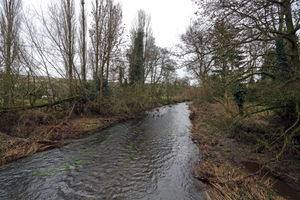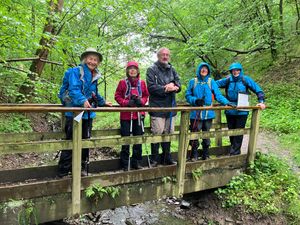Bridge plan to help boost River Clun quality
A new bridge could be built over the River Clun in Shropshire amid fears it could lose its status for healthy waters.

The river, which runs through south Shropshire, could be at danger of losing its Special Area of Conservation status unless changes are made.
It is also not keeping up its expected levels of freshwater pearl mussels.
Now the Shropshire Hills AONB Partnership will investigate building a bridge over the river to replace a ford, where sediment could be seeping into the water.
A two-year funding agreement to the end of March 2021 has been made with the Environment Agency to fund Alison Jones as the Clun catchment officer, along with a capital works budget.
She said: “The River Clun catchment consists of seven tributary streams and the presence of freshwater pearl mussels found in the lowest five kilometres of the river has led to it being designated a Special Area of Conservation.
“This bottom section of the river is also part of the River Teme Site of Special Scientific Interest.
“Due to the position of the SAC within the catchment, inputs from all seven waterbodies influence water quality, and the river is failing to meet its conservation objectives for phosphates, nitrates and suspended solids and the freshwater pearl mussel population is in decline.
“Losing this population will be viewed as Defra failing its legal duty to maintain the SAC under the Habitats Directive and could result in Infraction Proceedings.”
She added: “In addition, the failure of the SAC to reach conservation objectives also precludes this waterbody from achieving ‘good’ status under Water Framework Directive legislation.
“This project will contribute to addressing the main impacts that are causing this failure, namely excess sedimentation and nutrient inputs.”
She added: “By concentrating on a suite of riparian [riverside] measures and interception of sediment pathways which will reduce the amount of sediment and nutrients entering the designated rivers, it can be demonstrated that necessary measures are being taken to protect the freshwater pearl mussel.
“Whilst this project concentrates on excess sedimentation and nutrient inputs there is also work taking place to improve the overall riparian habitat along the river and at two sites to achieve sufficient improvements that freshwater pearl mussels might be translocated to them in the future.”
She said as well as looking at the possibility of building a bridge, highways run off will also be looked at, as well as tree-planting.





